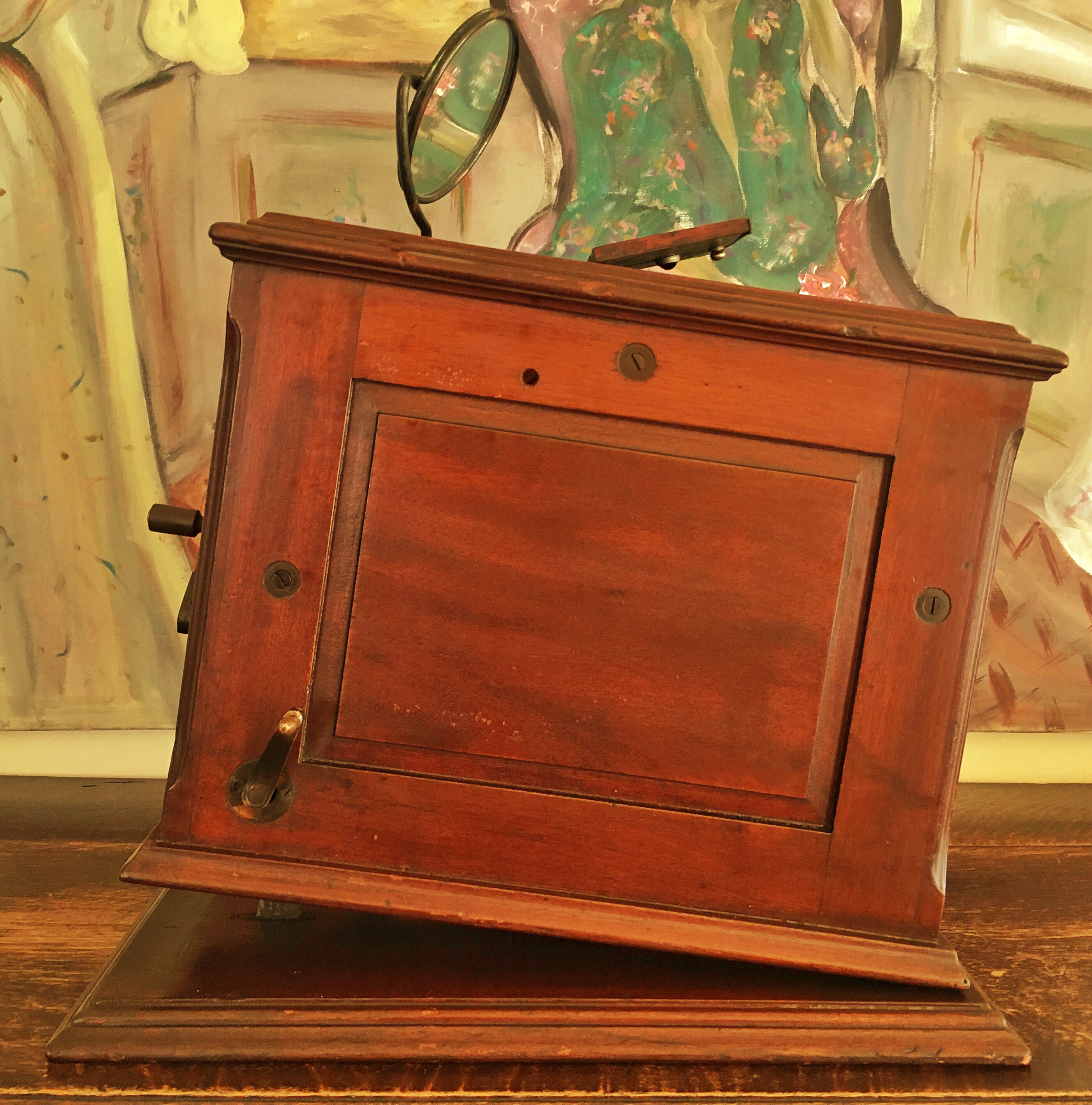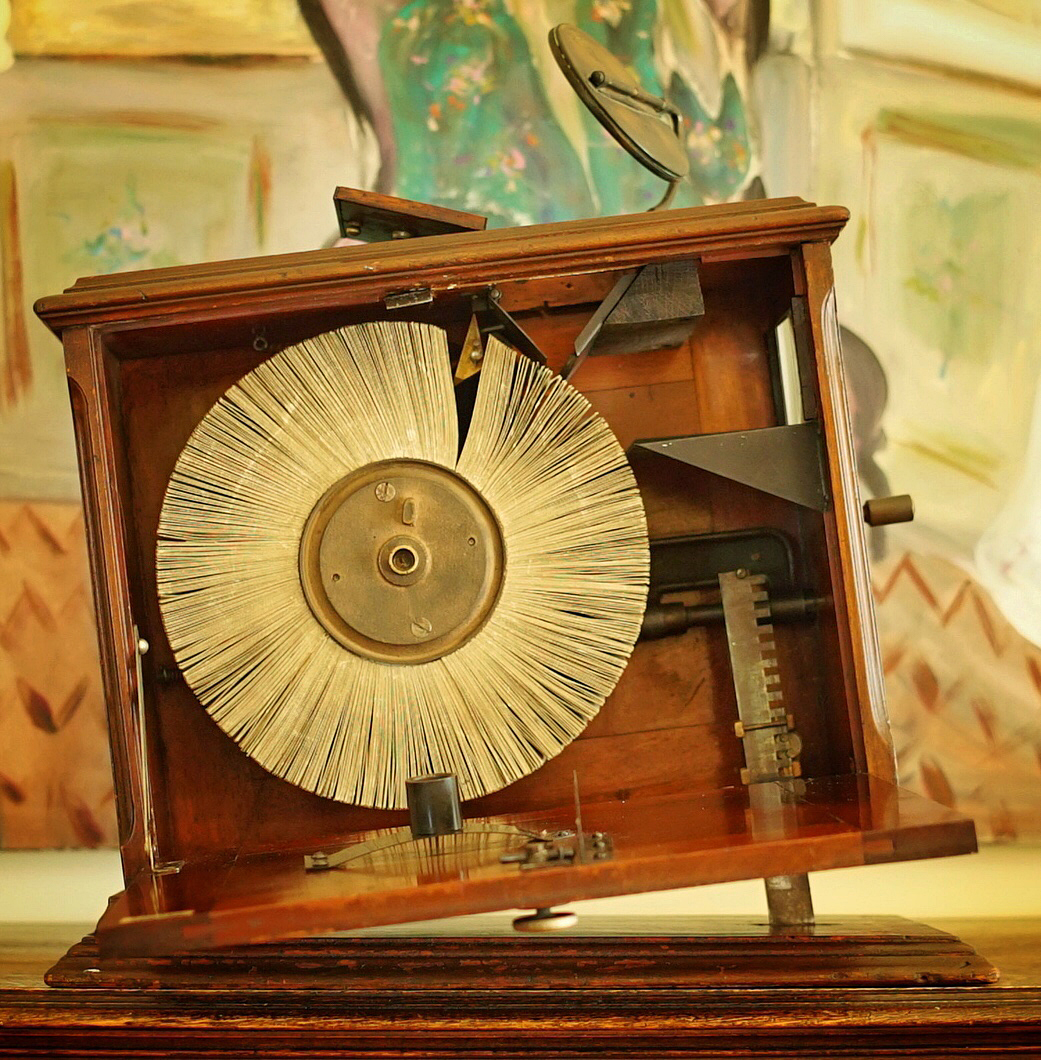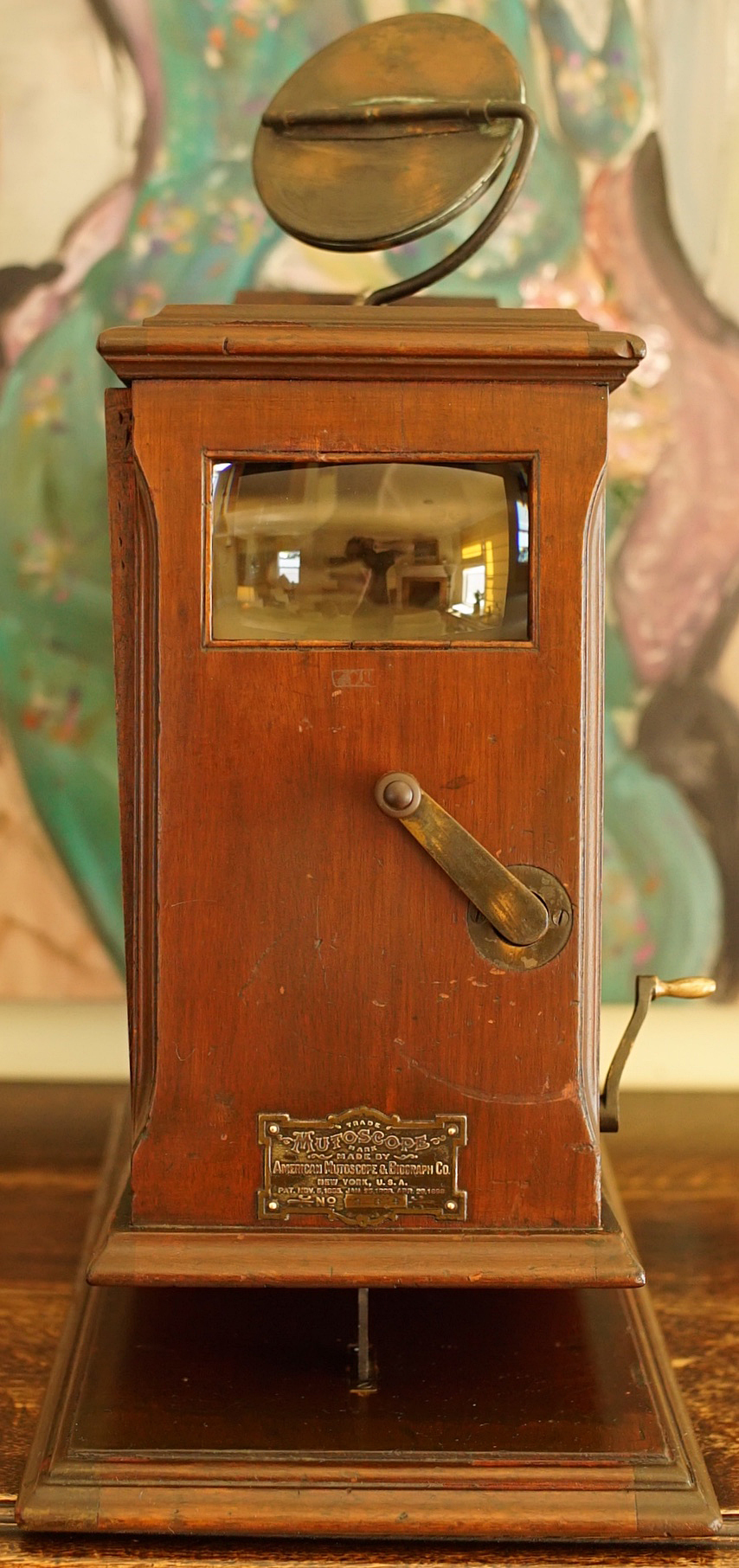
ASC Museum curator Steve Gainer, ASC, ASK recently performed a much-needed servicing on the 1890s-era Mutoscope that is part of the Society’s collection.
Gainer reports: “Replaced new screws with vintage-correct examples from my stock. Oiled mechanism and ran without reel several hundred cranks to ensure lubricant reached every crevice. Treated case with professional finish restoring solution. Cleaned lens and mirror. Repaired latch. It is freaking amazing to run!”
The device, made in New York by the American Mutoscope & Biograph Company, serial number 264, was donated by Charles G. Clarke, ASC.


As described on Wikipedia:
The Mutoscope was an early motion picture device, invented by W.K.L. Dickson and Herman Casler and later patented by Herman Casler on November 21, 1894. Like Thomas Edison’s Kinetoscope, it did not project on a screen and provided viewing to only one person at a time. Cheaper and simpler than the Kinetoscope, the system, marketed by the American Mutoscope Company (later the American Mutoscope and Biograph Company), quickly dominated the coin-in-the-slot peep-show business.
The Mutoscope worked on the same principle as the flip book. The individual image frames were conventional black-and-white, silver-based photographic prints on tough, flexible opaque cards. Rather than being bound into a booklet, the cards were attached to a circular core, rather like a huge Rolodex. A reel typically held about 850 cards, giving a viewing time of about a minute. The reel with cards attached had a total diameter of about 10" (25 cm); the individual cards had dimensions of about 2 3⁄4" × 1 7⁄8" (7 cm × 4.75 cm).

Mutoscopes were coin-operated. The patron viewed the cards through a single lens enclosed by a hood, similar to the viewing hood of a stereoscope. The cards were generally lit electrically, but the reel was driven by means of a geared-down hand crank. Each machine held only a single reel and was dedicated to the presentation of a single short subject, described by a poster affixed to the machine.
The patron could control the presentation speed only to a limited degree. The crank could be turned in both directions, but this did not reverse the playing of the reel. Nor could the patron extend viewing time by stopping the crank because the flexible images were bent into the proper viewing position by tension applied from forward cranking. Stopping the crank reduced the forward tension on the reels causing the reel to go backwards and the picture to move from the viewing position; a spring in the mechanism turned off the light and in some models brought down a shutter which completely blocked out the picture.
The ASC’s Mutoscope does not have an electric lamp and is instead designed to use light reflected into the mechanism by way of the top-mounted adjustable mirror:

Before film projectors became commonplace, the Mutoscope was replaced by such exhibition devices as the Edison Kinetoscope, a very rare example of which you will also find in the ASC Museum.